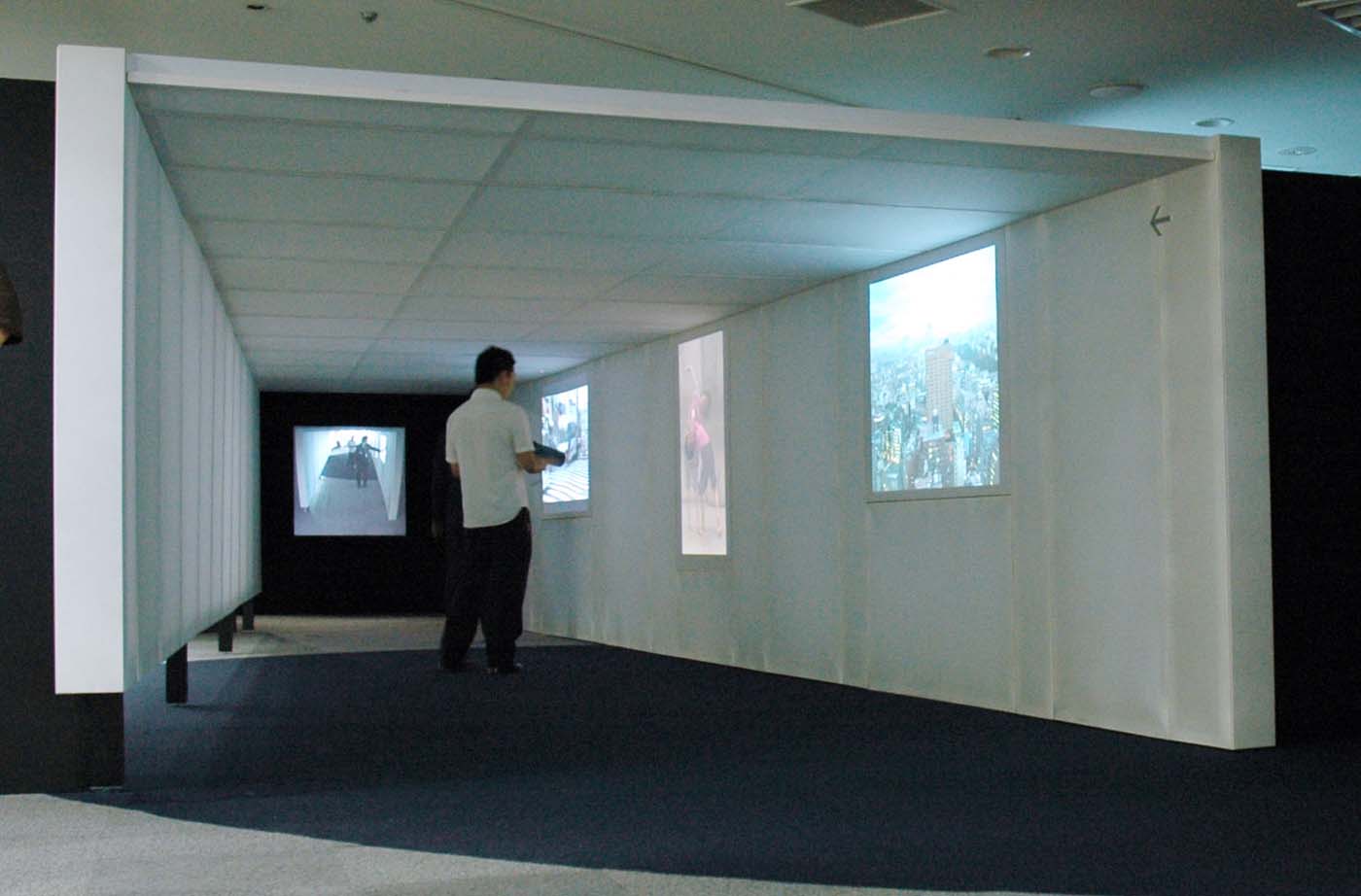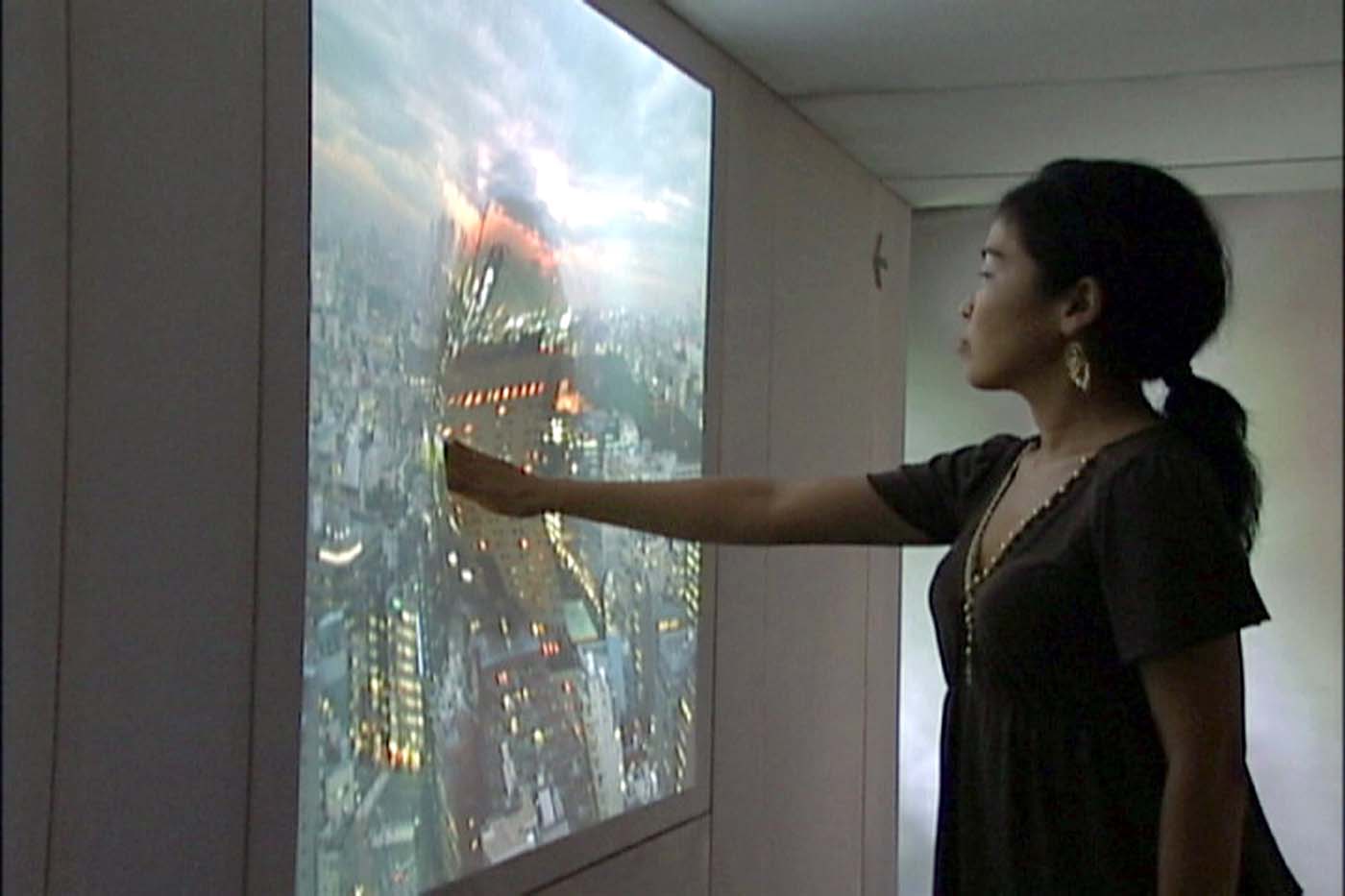Okamura Design Space / Tokyo (2006)
Hiroshi Naito, Alvaro Cassinelli, Masatoshi Ishikawa

In the TIMESCAPE installation – comprising ten “khronos projector” screens – there was one particular screen that featured the Khronos Projector in live-video mode. In this mode, a webcam facing the user would supply the content for the khronos projector in real time. Several seconds of video were buffered that way. For each new captured frame, the oldest frame in the buffer was discarded, thus forming a first-input first-output buffer of images.
The concrete result was a screen that acted like a large mirror with memory. Such magical mirror, in the absence of interaction, would act as a normal reflecting surface; however, when touched it would bring hidden layers of Time.
This particular screen was purposeful placed in the middle of the walking path conceived by architect Hiroshi Naito. The circularity of the space suggests an invisible cage, an infinite that is confined in a finite space – like the one that one can glimpse through the game of the parallel mirrors, or the Ouroboros swallowing its own tail. The “mirror with memory” complements this by also suggesting the inescapable circularity of Time.
